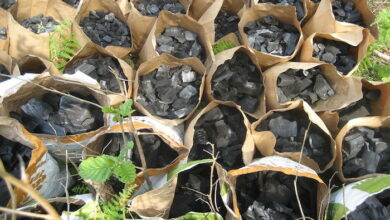
Symbiotic relationship between plants and mychorrhizal fungi has been in existence for over 400 million years. Fungi cannot survive on their own as they are incapable of producing their own food. Hence, they latch on to the plants roots to get essential food. Plants share a part of the carbohydrates produced during photosynthesis and in return, fungi supply phosphates and other minerals, by mining them from the soil.
These natural fertilizers are much sought for by plants as they are very critical for their growth. So, this mutualism is not only beneficial for both plant and fungi, aiding each other in their growth and sustenance, but also is very important and significant for the sustainable agriculture.
But is this resource exchange, as simple and straight forward as it seems? – You give me phosphates and I give you carbs. Or, is it much more intricate and complex?
Recent research work in this field of plant biology has shown that, this phosphate for carbohydrate trading is a bit more involved and quite fascinating. Not all fungi species are co-operative and generous in giving phosphates. Some don’t do fair trade and they try to cheat the plants by supplying with less amount of phosphorus – far less than the amount of carbohydrates they receive from the plant.
“In a case like this, the plant can deliberately decide to provide the meaner partner with fewer carbohydrates.” say ecologists Pascal Niklaus and Bernhard Schmid from the University of Zurich.
This is exactly what happens. In response to bad trading ethics of the fungi, plants starts reducing the carbohydrates it supplies to the fungi. Sometimes, it may even go to the extent of starving the fungi, till the fungi mends its way and starts supplying a higher amount of phosphates.
On other occasions, the plant roots observing the unfair trading habits of the fungi will go in search of more cooperative fungi species to do trading. It is observed that, this new association with the generous fungi species, brings in a behavioral change in the less cooperative fungi, and it too starts to supply with a healthier percentage of phosphate to the plant.

Andres Wiemken from the University of Basel giving insights into this phenomenon says, “The plant exploits the competitive situation of the two fungi in a targeted manner, triggering what is essentially a market-based process determined by cost and performance.”
What this implies is that, the amount of resources a fungus is willing to trade off depends on the presence or absence of another fungus. If only one fungus is having a resource exchange with the plant, the amount of phosphate it is willing to give is smaller than when there is another fungus in the vicinity.
In a way, the prevalence of a competitive market with the presence of multiple fungi species helps to bring down the unit cost of phosphate, as it compels the less cooperative fungi to supply more phosphate. This goes to show that, supply and demand influence the resource value, even in the plant world. Presence of multiple fungi species increases the P supply and drives its price down. Thus the cost in C per unit of P is reduced due to a more competitive market. This could possibly be one of the main driving factors for plants to have association with multiple fungi species.
Professor Stuart West of Oxford University’s Department of Zoology drawing insights from his research work says, “These ‘biological markets’ operate in which both partners reward fair trading rather than one partner having the advantage and exploiting the other.” He further adds, “Both plants and fungi can be choosy, ‘playing the market’ and looking for a better trading partner if they aren’t getting a good deal.”
Interestingly, it is observed that, not only are more carbon supplied to the more cooperative – ‘fairer trading’ – species of fungi but also that more phosphorus is supplied to more cooperative plants.
“We think that this sort of biological market, reminiscent of a market economy, has arisen because there are so many different individuals either partner could trade with,” says Professor West. “Rather like with human traders, if they are given a chance both plants and fungi will go elsewhere to get a better deal.”
Looking at the behavior and decision-making ability of plants, researchers believe that plants would be suitable for testing general market-based theories. “Because plants make their decisions based on physiological processes and are not distracted from the best course of action by subjective thought, they could even be better models than animals and people,” says Bernhard Schmid from the University of Zurich.
References:
“Options of partners improve carbon for phosphorus trade in the arbuscular mycorrhizal mutualism”, Alicia Arguello etal, Ecology Letters, 2016.
“Reciprocal Rewards Stabilize Cooperation in the Mycorrhizal Symbiosis”, E. T. Kiers etal, Science, 2011.












